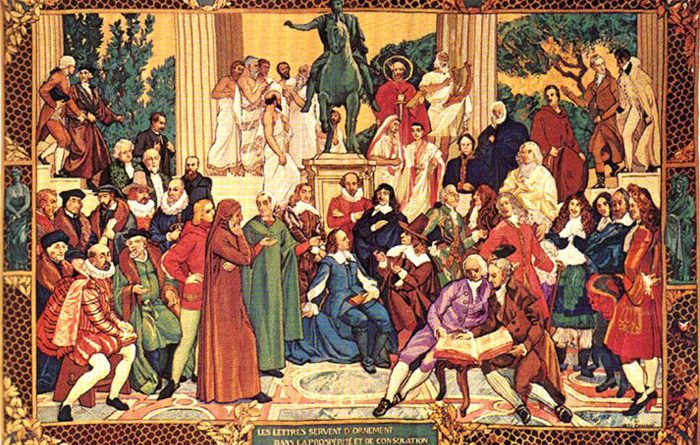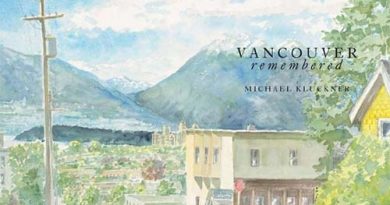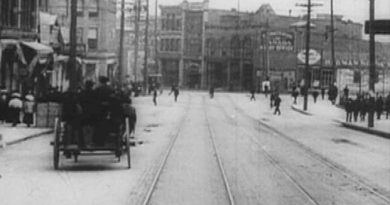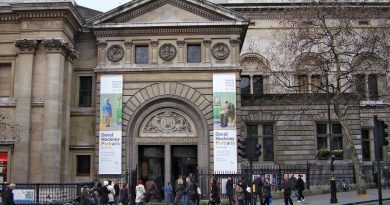The Masters of the Spirit
One of the most unusual works of art in Vancouver is in the Charles Woodward Memorial Room of the University of B.C.’s Woodward Biomedical Library. But you can’t see what’s unusual about it until you get up close.
It’s a tapestry—a big one—nearly five metres long, more than three metres high, titled The Masters of the Spirit. It was commissioned by Antoine Behna, a post-war patron of tapestry in France. (Behna’s fortune came from his manufacture of most of the cloth used in the manufacture of European umbrellas.) He wanted a tapestry designed to honor men who had made contributions in music, drama, philosophy, literature. The design was by Guillomet.
But the physical work on the tapestry itself was done by a craftsman (called a tapissier) who, for reasons that will be appreciated later, shall remain anonymous.
“The man whose work we see,” wrote Dr. William Gibson, in a 1971 article for JAMA, the Journal of the American Medical Association, “was aged 68 at the time of the creation of this colorful tapestry. The talented veteran who worked this spectacular tapestry, proceeding from left to right in the manner of haute lisse, most unfortunately suffered a cerebral hemorrhage. This stroke incapacitated him only temporarily and he was eventually back at his giant loom, completing the right half of the undertaking. Thus we have before us the result of a cerebrovascular accident.”
Visitors often sit in front of the massive tapestry, comparing the two halves.
“The change,” Gibson says, “begins just above the head of Marcus Aurelius and the figure of William Shakespeare. The honeycomb border, so perfect up to that point, suddenly becomes irregular both in form and in color. Descartes’ face is slightly twisted, and the right forefinger of Spinoza, just below that, is greatly enlarged . . . Homer’s harp is warped, and the column on which he is leaning is not as sturdy as that on the left half of the tapestry. The trees behind Balzac are quite different from those behind Nietzsche.”
What makes this unusual object doubly interesting is that the tapissier refused to believe his work had deteriorated.
“In fact,” says Gibson, “he rebuked his wife severely when she called this difference to his attention as it developed. His first retort was that he had been 50 years in this work and he needed no free advice. His second and more forcefully expressed reply was that he was doing better work now than ever.”
The memorial room of the library is dedicated to the pioneer physicians of B.C. and was a gift from P.A. Woodward in honor of his father Charles, who founded the department store.




